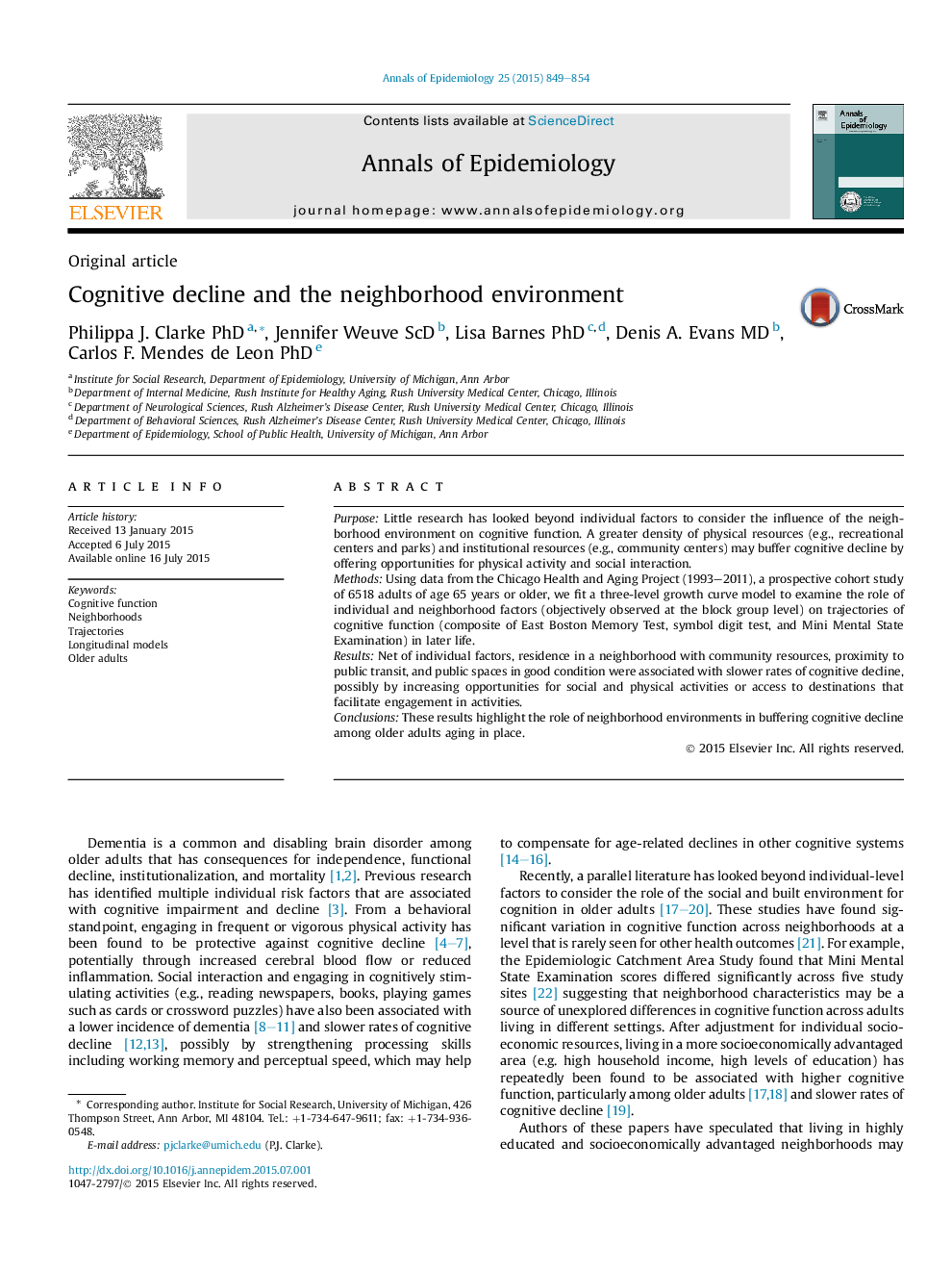| Article ID | Journal | Published Year | Pages | File Type |
|---|---|---|---|---|
| 3443715 | Annals of Epidemiology | 2015 | 6 Pages |
PurposeLittle research has looked beyond individual factors to consider the influence of the neighborhood environment on cognitive function. A greater density of physical resources (e.g., recreational centers and parks) and institutional resources (e.g., community centers) may buffer cognitive decline by offering opportunities for physical activity and social interaction.MethodsUsing data from the Chicago Health and Aging Project (1993–2011), a prospective cohort study of 6518 adults of age 65 years or older, we fit a three-level growth curve model to examine the role of individual and neighborhood factors (objectively observed at the block group level) on trajectories of cognitive function (composite of East Boston Memory Test, symbol digit test, and Mini Mental State Examination) in later life.ResultsNet of individual factors, residence in a neighborhood with community resources, proximity to public transit, and public spaces in good condition were associated with slower rates of cognitive decline, possibly by increasing opportunities for social and physical activities or access to destinations that facilitate engagement in activities.ConclusionsThese results highlight the role of neighborhood environments in buffering cognitive decline among older adults aging in place.
